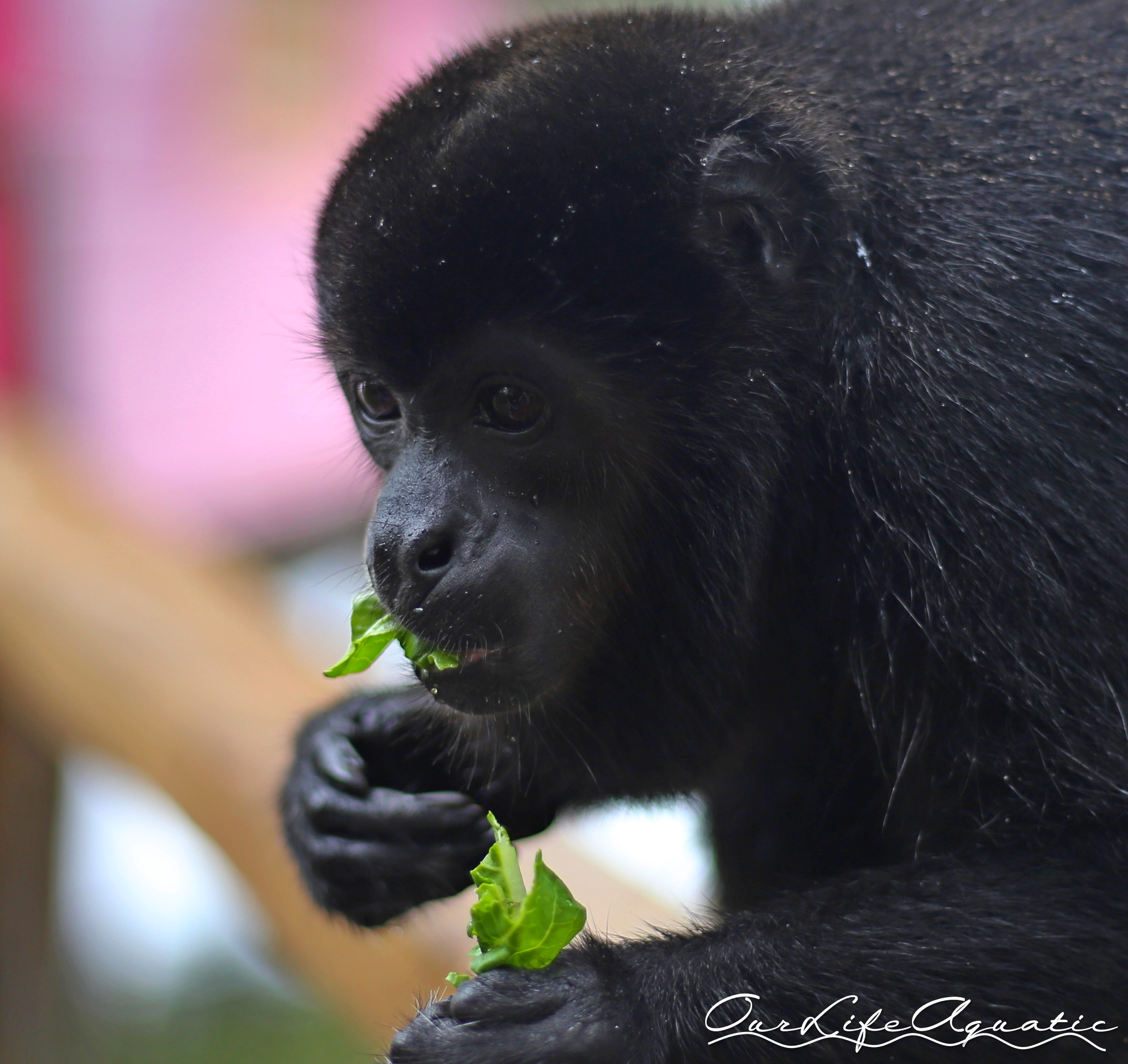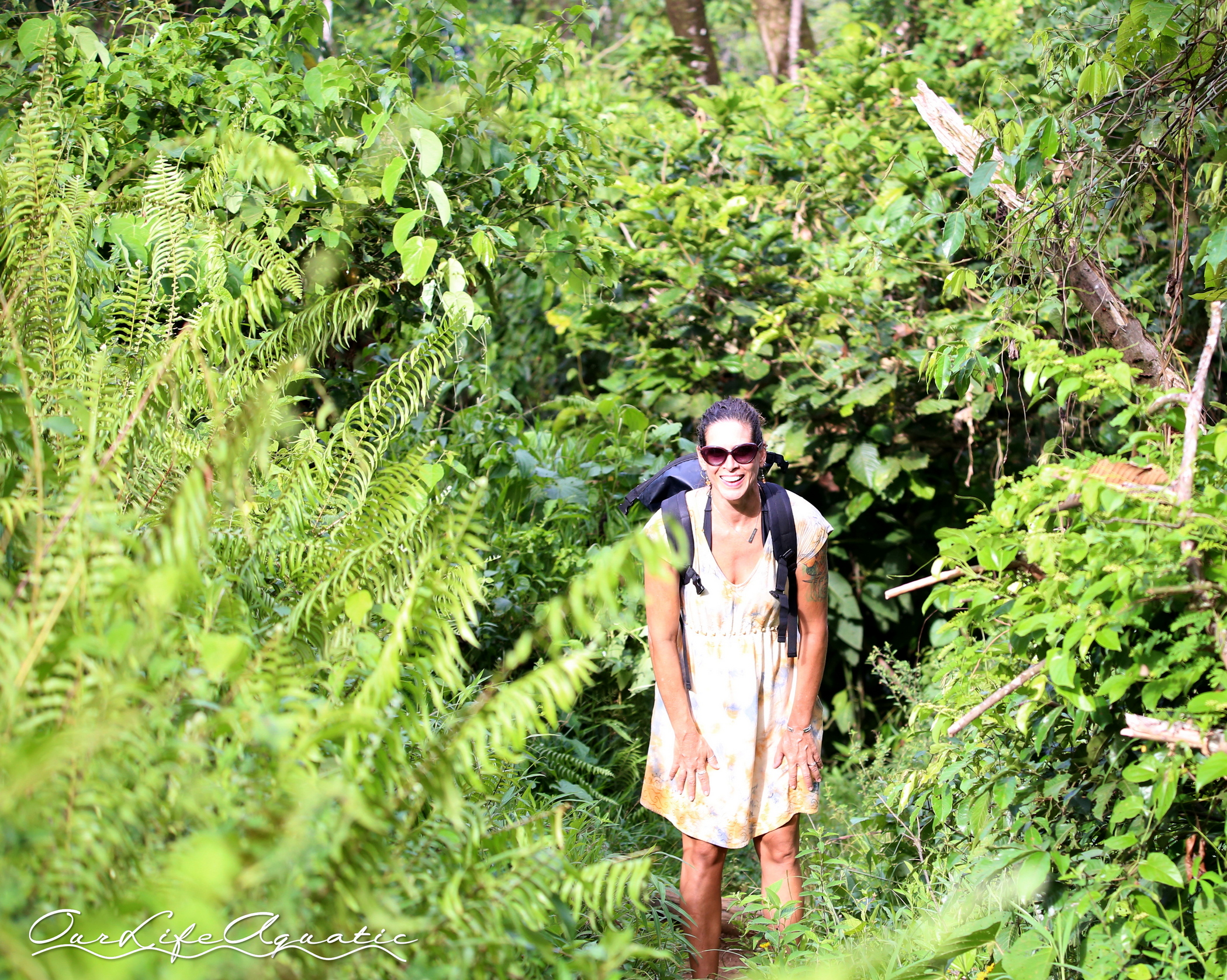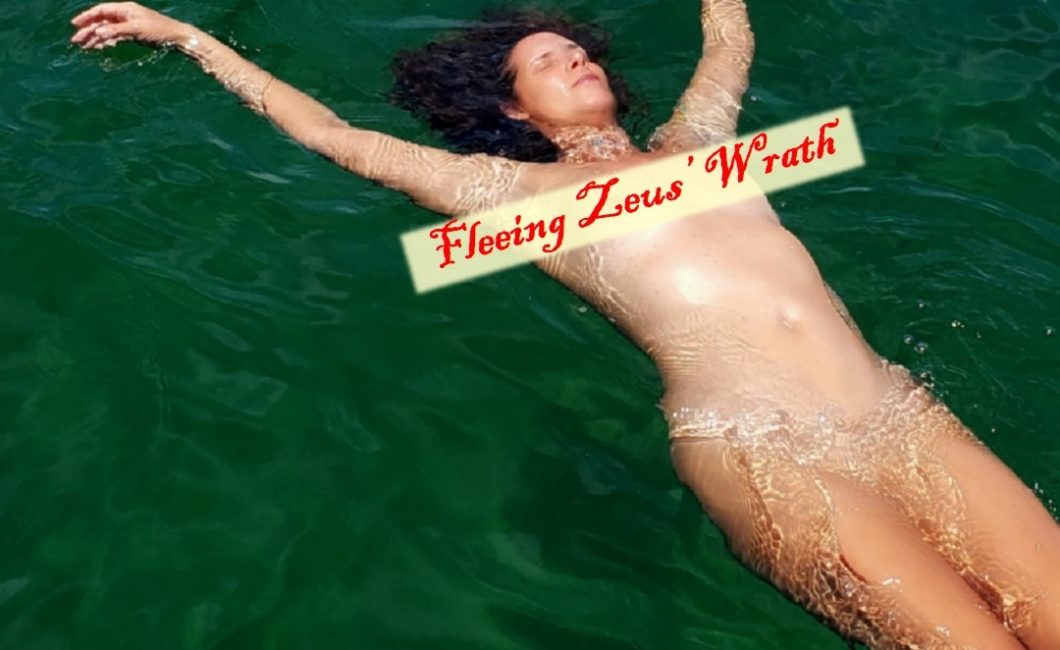 We had spent five months of absolute bliss exploring the islands of the Guna Yala (San Blas), but it was time to move on. We were ready to leave for a couple of reasons. The main one was that we had exactly one month before our scheduled haulout of ¡Pura Vida! in early July and we wanted to take our time traveling west and explore along the way. The second reason is that lightning season was beginning in the Guna Yala. This is no ordinary lightning, but storms so severe that the night turns to daylight from all the flashes. We had heard horror stories from friends about boats being struck by lightning, causing tens of thousands of dollars in damage. It only took us riding out one such storm at anchor to decide it was time to go. They always happen at night. We did not sleep a wink as we counted the seconds between flashes and thunder most of the night. Five seconds away, good. They slowly moved closer. Four seconds. Three. Two. One. Holy crap, that one hit right next to us! That’s when we remembered to put our phones, satellite communicator, back-up hard drive, and other small electronics in the oven. This is no guarantee they would survive a lightning strike, but the metal oven might improve their chances. For a couple of hours, we could not distinguish the lightning from the thunder, they were simultaneous. Pura Vida’s hull, and our nerves, reverberated with each close call. Fortunately, around dawn, the storm started to slowly saunter away towards the open sea and the light of daybreak replaced the petrifying strobe lights.
We had spent five months of absolute bliss exploring the islands of the Guna Yala (San Blas), but it was time to move on. We were ready to leave for a couple of reasons. The main one was that we had exactly one month before our scheduled haulout of ¡Pura Vida! in early July and we wanted to take our time traveling west and explore along the way. The second reason is that lightning season was beginning in the Guna Yala. This is no ordinary lightning, but storms so severe that the night turns to daylight from all the flashes. We had heard horror stories from friends about boats being struck by lightning, causing tens of thousands of dollars in damage. It only took us riding out one such storm at anchor to decide it was time to go. They always happen at night. We did not sleep a wink as we counted the seconds between flashes and thunder most of the night. Five seconds away, good. They slowly moved closer. Four seconds. Three. Two. One. Holy crap, that one hit right next to us! That’s when we remembered to put our phones, satellite communicator, back-up hard drive, and other small electronics in the oven. This is no guarantee they would survive a lightning strike, but the metal oven might improve their chances. For a couple of hours, we could not distinguish the lightning from the thunder, they were simultaneous. Pura Vida’s hull, and our nerves, reverberated with each close call. Fortunately, around dawn, the storm started to slowly saunter away towards the open sea and the light of daybreak replaced the petrifying strobe lights.

Fueled by coffee and still jittery from the night before, we plotted our escape. The journey from the Guna Yala to Bocas Del Toro, our haulout destination, is just over two hundred miles. To avoid long overnight sails, we decided to break it up into four smaller hops. This plan also allowed us to sightsee along the way and visit out-of-the-way areas where many cruisers and tourists seldom go.
Two days later we were ready, and weighed anchor from the Western Lemmon Cays for a day sail to Linton Bay. This was familiar territory for us since we had gone to Linton earlier in the year. This time, however, we would continue west to explore new areas of Panama.
After a short stay in Linton, we set sail for the Rio Chagres. There was only one major obstacle along the way, dodging enormous freighters and tankers as we passed the Atlantic entrance to the Panama Canal. We were lucky that during our crossing of the entrance, very little traffic was moving. Most of the behemoths were anchored awaiting their turn. Just when we thought we were clear, we spotted an 800-foot cargo ship leaving the canal heading right for us and accelerating. We changed course to avoid a close call, but it was moving so fast that it still passed behind us less than half a mile away. That may seem like a lot of distance, but it is too close for comfort when you are on a tiny boat staring at millions of pounds of steel barreling towards you.

Shortly after the canal entrance, we reached the Rio Chagres. This river was dammed to create Gatun Lake and the Panama Canal, so it has a slow, moderated water flow. Despite being just two miles away from the canal locks, it feels shockingly remote. The river is wide and navigable almost then entire way to the dam, which is six miles upriver. Both banks are lush jungle with no houses or roads. Before the canal was built, this river was a major waterway for commerce. Today, it is a protected nature reserve full of howler monkeys, birds, crocodiles, and fish. Best of all, we had this jungle hideout all to ourselves.
While exploring inland on foot proved a bit challenging, we enjoyed taking Lagniappe, our dinghy, up as many river branches as possible. Many of these small waterways were hidden by foliage and hard to spot. But once inside, the jungle opened up to us. We even took one stream all the way up to a small waterfall. We could easily pretend we were the first humans to ever visit this unspoiled location.


On our last day in the river, we moved and anchored near the mouth. From there we could dinghy ashore and hike up to the remains of Fort San Lorenzo. The fort was originally built in 1587 and is now a national park and UNESCO World Heritage Site. This impressive Spanish fortification sits atop a large hill with dominating views of the approach to the river and surrounding lowlands.



Because of the length of our next jump, we could not leave in daylight and arrive before sunset, so we opted for an overnight passage to ensure we would arrive the next morning with plenty of daylight remaining. Our planed destination was Escudo de Veraguas, a small island off the coast known for unique wildlife and stunning hikes in the dense forest. As soon as we got there, however, we realized we would have to skip this anchorage and continue two more hours west. The wind was brisk from the west, creating huge rolling waves at Escudo that made the anchorage not just uncomfortable, but potentially dangerous if we tried to lower the dinghy and go ashore.
Resigned to our fate, we pulled up anchor and headed into the wind to a bay with complete protection on the mainland of Panama. Despite our disappointment at not being able to explore Escudo this time, we were grateful that we planned to arrive in the morning. This gave us the flexibility to continue and reach Bahia Tobobe with plenty of light to safely navigate the narrow, reef-strewn entrance. Charts of this area are notoriously inaccurate, so attempting an entrance without being able to “read” the reefs with the naked eye was not an option.
As soon as we cleared the outer reefs of Tobobe, the waves faded. The bay was flat calm with several locals rowing their dugouts from village to village. We were the only sailboat in the large bay, so eventually we became a curiosity. A woman stopped by with her two sons because they wanted to “see a yacht” up close. A man that runs the local mini mart rowed out to us to tell us about his shop, the town, and offer his services as a guide. He gave us a lengthy lesson in local politics and the struggle to maintain their way of life with mounting pressures from the outside world to develop hotels in the area. We ended up chatting for almost an hour and we promised we would be back with more time to explore.
Later in the afternoon, a young boy rowed by and cautiously approached us. When we waved and smiled, he came right over. It seems that the locals here have the gift of the gab. Amadeo talked to us at length about his family, schooling, and life plans. He was fascinated by our life on a boat and asked questions non-stop. We parted ways with a gift of fishing supplies, sunglasses, and a promise to bring more sunglasses next time for all his brothers. We only spent a day in Tobobe, but when we return, it will feel like we’re visiting friends.

The next morning we pulled up anchor, eager to complete our last jump and arrive at our next long-term destination, Bocas del Toro, which means “Mouths of the Bull.” We couldn’t wait to put down roots and explore the expansive bays, reefs, and mangroves that make up the Bocas area. We were also looking forward to reconnecting with s/v Ketchy Shuby and meeting new friends who another cruiser had introduced us to online. This can be such a small community and meeting fellow cruisers is part of the fun.


Shortly after dropping anchor near Bocas Town, Lagniappe was in the water and we sped off to explore. Bocas Town is a quirky, vibrant tourist destination that has not lost its local flavor. The population is mostly locals, expatriates from the US, Canada, and Europe, as well as adventure-seeking young travelers toting surfboards and all their belongings on their backs. The waterfront streets are lined with hostels, bars, restaurants, tour operators, shops, and street food vendors. It’s a bit quiet during the middle of the day, but at night the place jumps to the beat of competing sound systems from the popular clubs. Even at the anchorage, we could hear the bump going on well past three a.m.

After some quick restocking of groceries and wine, it was time to play. We set up a date with old friends and new at the local brewery. That’s right, beer lovers, Bocas has its very own brewery, serving excellent craft beers with a local flare. The brewery is a tiny place with a shabby dock, open-air bar, flexible opening hours, and a lazy dog or two that sleep the day away under patrons. In other words, it is island perfection.
When we finally met Joe and Michelle from s/v Soul Rebel, and Rob and Keri from s/v Kai in person, it was an instant connection. Good thing too, because their cruising plans are very similar to ours for the next year or two, and we will likely see them at many anchorages. Both couples have been in Bocas for more than a year, so they were a wealth of local info, and we soaked it all in. We got waypoints to help navigate the poorly charted waters, pointers on best days of the week to shop for produce, secrets about which grocery stores will deliver your boxes of liquor to the dock, and so much more.

Armed with our new knowledge, we set off to explore more remote anchorages. During the three weeks we had remaining before our haulout, we hiked through the jungle to a secluded beach, snorkeled pristine reefs, and bicycled sandy gravel roads to reach isolated beachfront bars. But the highlight of our time in Bocas so far was our visit to Monkey Island. This minute mangrove island is a small, private sanctuary for rescued monkeys. They house and care for several species of monkeys that cannot be re-released into the wild because they were captured as babies and would not likely survive the transition. It is heartwarming to see such beautiful creatures getting a second chance to live a happy existence.









With our haulout date fast approaching, our list of boat chores was growing. We have never before left ¡Pura Vida! for more than a couple of weeks, so preparing her for a four-month hiatus from sailing while we visit Costa Rica seemed daunting. Once again, we relied on cruising friends with experience who were eager to share their extensive preparatory lists, tips, and tricks.

We are still anxious about leaving our beloved sailboat alone for so long. With the advice of friends and help from the boat yard staff, I’m sure we will get her ready. As soon as July 4th rolls around, our four month Costa Rican land adventure begins. Our life will be a bit less aquatic until we return to Bocas in November.



#AMADO
#KETCHYSHUBY
#MICHELLE&KERI
#MIKA
#COSTARICABABY
#SIGNSIGNSIGN
Wow just wow y’all two are the most blessed couple in the world !!!! 🥰😘♥️❤️😊🏖😎🙃😉😍
Thanks, Beth.
Great blog of your adventures.
You two are enjoying the freedom to go wherever the winds blow you.
Enjoy life on the water. I am jealous.
Tom Waldrup
Thanks, Tom. It took a lot of planning, but worth it now that we’re out here.